You’ve been told that you need hearing aids. Where to proceed from here? The provider you’re seeing will guide you through the next steps. Hopefully, this person is a Doctor of Audiology so you can be assured that your hearing healthcare is in good hands. However, it can be helpful to do some research on your own on the subject.
The first thing to consider with hearing aids is the style. Now, style does not dictate cost. Whether you have a hearing aid that fits completely in your ear or a hearing aid that sits behind the ear, the price shouldn’t differ. The thing that changes price is the technology within the hearing aid.
There are two main styles of hearing aids: behind the ear and custom devices. These are two broad categories that can be broken down into specifics, each with their own pros and cons. First, let’s talk about custom devices.
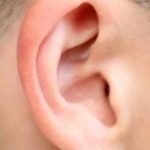
ICC Hearing Aid
Custom devices range in their visibility. The smallest devices are called Invisible-In-Canal (IIC). These devices sit very deep in your ear canal in an effort to conceal the hearing aid completely, making it “invisible.” The removal cord often is concealed in the canal as well. IIC’s are the most discreet hearing aid style of all the sizes and types. The cosmetic aspect is something many patients desire. The stigma behind hearing aid users “being old”, while untrue, has many people requesting this style. However, this device would not work for those with more severe hearing loss. Also, the small size can be challenging to those with dexterity or vision issues. Additionally, a manual control for volume or programs isn’t an option since they’re trying to make the device as small as possible. Also, a smaller device comes with smaller batteries, which offers a shorter life span. That means changing batteries more frequently.
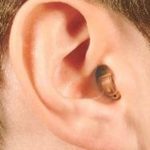
CIC Hearing Aid
The next size up are devices labeled as Completely-In-Canal (CIC). This means that the device is not seated in your ear as deeply and that the pull cord to remove the hearing aid is the only thing visible outside the ear canal. The rest of the device is in the canal and cannot be seen easily. CIC devices come with some of the shortcomings of IIC’s- they are still small and sometimes challenging to handle, they cannot always accommodate controls for volume or memory, and they have smaller batteries which require more frequent changes.
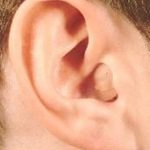
ITC hearing aid
Another type of custom device is In-The-Canal (ITC) hearing aids. With this style of hearing aid, there is a small portion that will be visible outside the ear canal. These devices are a step above CIC’s in size. Since the devices are larger, they can accommodate push buttons for volume and programs which allows greater control for the patient over their hearing experience. Despite the larger size, these devices are still small and can present problems for patients with dexterity issues. The battery size, again, is smaller and requires more attention than larger devices

ITE Hearing Aid
ITE stands for In-The-Ear hearing aids. This is the next size up from ITC’s and is the largest of the custom devices. These hearing aids fit within the outer portion of the ear and are more visible. However, they fill the ear at varying levels and can be requested to be smaller or to fill the ear more based on the patient prerogative and what will work best for their hearing loss. Since this hearing aid is larger, it can take a larger battery which means that the patient will have to change batteries less frequently. Additionally, this style has recently entered the realm of rechargeable hearing aids, reducing the struggle for some patients. Also, there is room for push buttons allowing controls for volume and memory which many patients utilize.
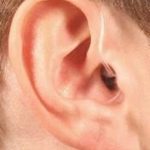
RIC hearing aid
Moving on from customs, let’s now talk about behind the ear hearing aids. There are two major divisions. The first is called Receiver-In-Canal (RIC). These devices are the smallest of the behind the ear hearing aids. Their size allows for more durability and for push controls to change volume and memory. These devices are quick to fit, and don’t need to be sent into a hearing aid lab to be created as custom devices do. Another benefit of this style is that there can be an open fit, which means the wearer’s voice will sound more natural and won’t be as bothersome as it might be in a custom device
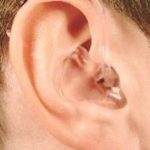
BTE hearing aid
The second type of behind the ear hearing aid is simply called a Behind-The-Ear (BTE) hearing aid. These devices have an ear hook that sits on top of the ear as well as tubing that connects the hearing aid to a custom earmold. This type of hearing aid easy to hold and adjust as it is larger than others. This also means it is the least discreet of the hearing aid types. The larger device also allows for longer battery life with larger batteries and can also be rechargeable in some instances. This aid is also more durable with volume and program control features.
So, what’s right for you? It’s hard to know, especially when presented with so many options. Not all hearing is the same, not all people are the same. See an audiologist and talk about what next steps are best for you. A doctor of audiology will help you choose a style that works with your hearing loss and personal preferences.
Additional Resource Links
https://www.starkey.com/hearing-aids/styles/behind-the-ear
https://centerforaud.com/blog/which-are-the-most-popular-types-of-hearing-aids
https://www.mayoclinic.org/diseases-conditions/hearing-loss/in-depth/hearing-aids/art-20044116
